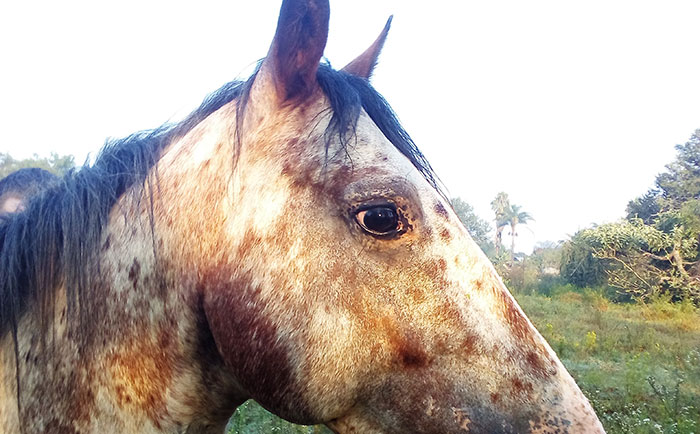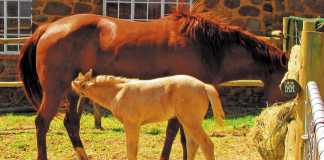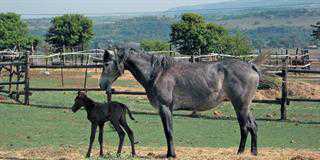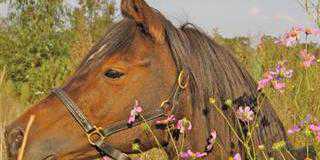
Photo: Dr Mac
In 2008, the gene for the ‘leopard spots’ seen in the Appaloosa and other breeds, including the Knabstrupper and miniatures, was found to be linked to congenital stationary night blindness.
The condition is present at birth (congenital) and does not get worse with age (stationary). Affected horses cannot see well in the dark, and may refuse to enter horseboxes or walk into dark stables in the daytime.
An incompletely dominant leopard complex gene, Lp, is responsible for all the types of white and dark spots seen in horse coats. The leopard gene also causes the horse to show a white sclera in its eyes and have mottled or blotchy skin around the muzzle, eyes, genitals and under its tail.
The skin over the rest of the body may be unpigmented (pink with white hair), pigmented (grey or black with dark-coloured hair), or mottled. Striped hooves are almost always present.
Only homozygous (LpLp) horses show night blindness. Heterozygous (Lplp) horses have slightly narrower pupils, but normal sight. As this is a dominant gene, lplp horses show no spotting or mottled skin.
The leopard complex comprises 10 different patterns. Typically, the homozygous dominant (LpLp) shows a ‘few spot’ pattern (white horse with a few black spots), or the horse is completely white with a ‘mottled’ skin.
Diagnosis
A leopard-patterned horse that’s white with black spots over its whole body is usually heterozygous (Lplp).
Other patterns appear in both LpLp and Lplp horses and include: blanket or snow cap, blanket with spots, spotted, snowflake, varnished roan, frosted (a roan blanket) and roan blanket with spots.
The diagnosis of congenital stationary night blindness can be made through genetic testing. Mild cases have reduced vision in dim light; severe cases are completely blind at night and even have reduced sight in daylight.
Some LpLp horses have poorly aligned eyes; others may show nystagmus (involuntary eye movements).
Sometimes positive cases have a pronounced head tilt to one side.
Routine examination by a vet will show no retinal damage. A suspected case needs to be referred to an eye specialist, as a special instrument is required to perform dark-adapted electroretinography.
Management
Affected horses can learn to cope and trust a rider. There’s no treatment, but it’s good to know your horse isn’t being difficult; it simply has poor vision. Training methods can then be adapted to help the horse cope with its disability.
Homozygous dominant horses can also be used in a breeding programme to bring in desirable conformation of performance features present in horses without spotted markings.
As 100% of the offspring have leopard complex markings, without night blindness (they’re all LpLp), breeders are already using this to outcross to solid coloured Quarter Horses and warmbloods.
For more information, go to: ncbi.nlm.nih.gov.
Dr Mac is an academic, a practising equine veterinarian and a stud owner.













